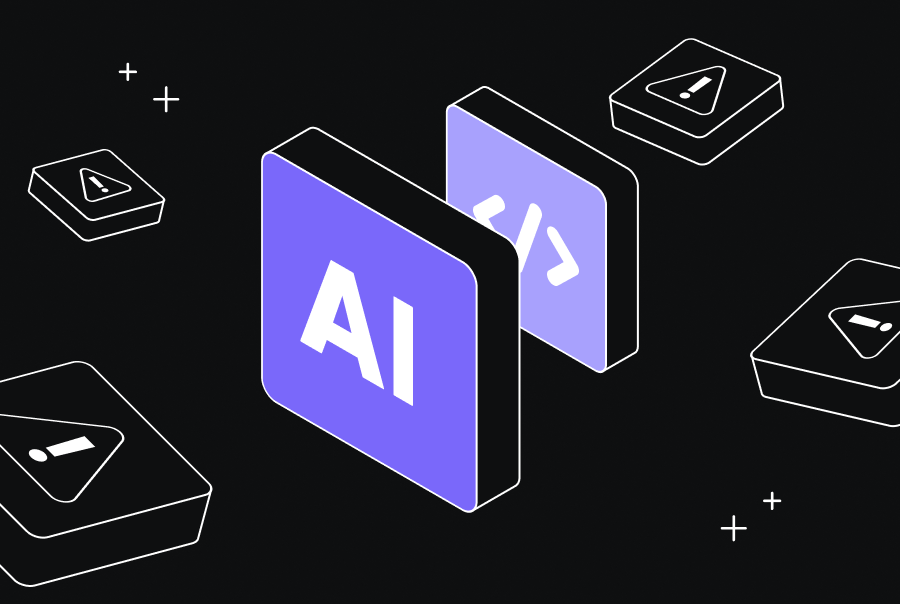Reducing technical debt with AI-powered code


Technical debt is the hidden cost of yesterday’s coding shortcuts. It’s the price teams pay for prioritizing speed over maintainability, often gobbling up half of the developer time. While getting features out the door quickly might win short-term battles, the accumulated debt can slowly but steadily turn your codebase into a house of cards. Recently, AI-powered code reviews have turned the tables in this fight. With them, developers can now not only automatically catch issues before they become embedded problems but also code in a way that aligns with global and enterprise best practices standards. Let’s explore how these tools can transform your approach to technical debt management.
The true cost of technical debt
Technical debt goes beyond dealing with age-old, messy code. It’s the cumulative effect of every rushed implementation, every “TODO” comment that never got addressed, and every workaround that became permanent. This debt can manifest in various ways:
- Slower development cycles as developers navigate complex, tangled code
- Higher bug rates when changes in one area unexpectedly break functionality elsewhere
- Increasing maintenance costs that drain resources from new feature development
- Knowledge gaps when original developers leave, taking their understanding of quirky implementations with them
Consider this common scenario where multiple developers have contributed to a Python function over time:
def process_user_data(data):
# Added by Alice in 2022
if data and 'user' in data:
# Temporary fix by Bob in 2023
if isinstance(data['user'], dict) and data['user'].get('id'):
# Quick patch by Charlie last week
try:
return api_call(data['user']['id'])
except Exception:
return {'status': 'error'} # Will implement proper error handling later
This superficially simple function hides multiple debt-creating practices. You can see inadequate error handling, assumption-based logic, and excessive nesting. And if you don’t intervene, patterns similar to these will keep multiplying across your codebase.
How AI-powered code reviews change the game
Traditional code reviews depend on human attention, which varies based on workload, expertise, and focus. AI-powered reviews bring much-needed consistency and depth to this process in several key ways. Here are a few:
- Pattern recognition at scale: While your senior devs might spot issues in the code they’re reviewing, AI can to identify problematic patterns across your entire codebase. You get a birds-eye view that reveals systemic issues that individual reviews might miss.
- Context-aware analysis: You shouldn’t assume modern AI code review tools to just apply generic rules for code analysis. Recent developments have allowed this new generation of AI tools to understand your specific codebase, its architecture, and patterns.
- Continuous learning: The most competent AI review tools improve over time by learning from accepted suggestions and creating a feedback loop where the AI gradually aligns with your team’s standards and preferences.
- Prioritized fixes: Not all technical debt is created equal. AI can help prioritize fixes based on severity, risk, and potential impact, allowing teams to tackle the most critical issues first.
The practical value becomes clear when we look at real-world implementations:
# Before AI review
def validate_input(user_input):
if user_input is not None and len(user_input) > 0:
if user_input.isalpha():
return True
return False
# After AI suggestion
def validate_input(user_input):
return isinstance(user_input, str) and user_input and user_input.isalpha()
This simplified example shows how AI can suggest more concise, robust code that maintains functionality while reducing complexity and potential error sources.
Integration into the development workflow
For maximum impact, AI-powered code reviews should become a natural part of your development process.
- Pull request integration: Tools that integrate directly into your PR workflow ensure every code change gets reviewed before merging. Using them, you can even rank issues by severity, ensuring critical problems get addressed first while allowing teams to defer less impactful changes when necessary. And as you start catching issues as early as at the PR stage, technical debt goes for a toss before it has a chance to pollute your codebase.
- IDE-level suggestions: Real-time feedback from AI can create a powerful learning loop for developers. When a potential issue gets flagged while you’re still writing code, you’re building better habits that prevent similar issues in future code (not just fixing it in that specific instance).
- Automated refactoring: The most advanced systems can implement approved changes automatically, reducing the manual work of debt reduction. This is particularly valuable for systematic problems that would be tedious to fix manually, like updating deprecated API calls or restructuring common patterns.
- Customizable rules: Every team’s definition of “good code” varies, and the ability to customize rules and standards ensures the AI enforces your specific quality guidelines. For example, you can configure sensitivity levels for different types of issues, specify architectural patterns to enforce, and even create custom rules that capture your team’s hard-won lessons.
Benefits beyond debt reduction
While tackling technical debt is the primary goal, there’s a laundry list of advantages AI-powered code reviews have to offer. Here are a few:
- Knowledge transfer: Junior developers learn best practices from AI suggestions and this accelerates their growth and helps reduce the learning curve.
- Consistent standards: Teams maintain coding standards more effectively when AI constantly reinforces them through suggestions.
- Documentation improvements: Many AI tools can suggest better comments and documentation, addressing another common source of technical debt.
How Qodo transforms technical debt management
Qodo stands apart in the AI code review department with its focus on code quality and rigorous approach to handling technical debt. Unlike traditional tools that simply flag issues, Qodo’s Context Engine understands your codebase at a fundamental level, providing suggestions that align perfectly with your architecture and patterns.
Qodo Merge, a proprietary code review agent, excels at identifying critical issues by focusing on problems that matter most, including bugs, security vulnerabilities, and maintainability issues, while filtering out stylistic noise. This targeted approach guarantees you’re addressing debt that truly impacts your business and not just cosmetic issues. That’s just one of the many highlights. But what truly sets Qodo apart is its ability to learn. The system analyzes patterns in accepted suggestions and then maintains and updates a best practices wiki specific to your codebase. This dynamic learning implies Qodo’s recommendations continuously improve and become more aligned with your team’s evolving standards.
For teams serious about managing technical debt, you can expect features like actionable feedback with the /implement command, which converts review discussions into ready-to-commit code changes. Similarly, the /review and/improve commands specifically target quality issues that contribute to technical debt.
So, are you ready to catch up to your technical debt and stop it from slowing down your company’s growth story? Book a demo today and see how AI-powered code reviews can transform your approach to code quality. Your future self (and your team) will thank you.
